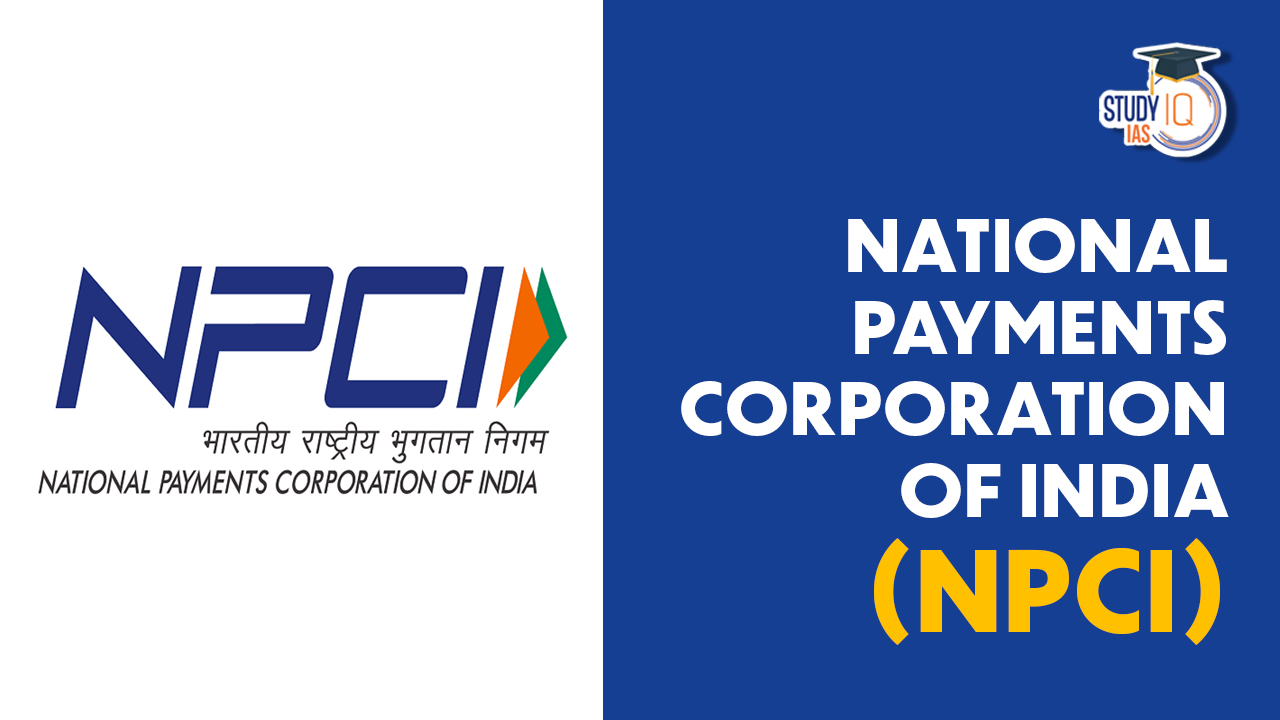Table of Contents
National Payments Corporation of India
National Payments Corporation of India or NPCI is an organization that operates and manages the payment systems in India. NPCI was established in 2008 by the Reserve Bank of India (RBI) and Indian Banks’ Association (IBA) as a not-for-profit company under the provisions of the Indian Companies Act, 1956.
Establishment of NPCI
Over time, NPCI has grown its network and has expanded its services in partnership with several other banks and entities in the Indian Financial Ecosystem. The following are the ten promoter banks that were instrumental in the establishment of NPCI:
- State Bank of India (SBI)
- Punjab National Bank (PNB)
- Canara Bank
- Bank of Baroda (BoB)
- Union Bank of India
- Bank of India (BoI)
- ICICI Bank
- HDFC Bank
- Citibank
- HSBC
Read about: Payment banks
Objectives of NPCI
The National Payments Corporation of India (NPCI) has several objectives. Some of the key objectives of NPCI include:
Promoting Digital Payments
NPCI aims to promote the adoption of digital payments and reduce the dependence on cash transactions in India. It develops and operates various payment systems that facilitate seamless, secure, and convenient digital transactions.
Developing Payment Infrastructure
NPCI focuses on developing and maintaining the necessary payment infrastructure to support different types of electronic payment systems. This includes the development and operation of platforms like UPI, BHIM, NEFT, IMPS, and RuPay, among others.
Facilitating Financial Inclusion
NPCI strives to ensure that every individual, regardless of their location or socio-economic background, has access to basic financial services. It works towards enabling financial inclusion by creating payment systems and solutions that are accessible to all sections of society.
Promoting Interoperability
NPCI promotes interoperability among different payment systems and service providers. It aims to facilitate seamless transfer of funds across various payment platforms, making it easier for users to transact and transfer money between different accounts and banks.
Enhancing Security and Risk Management
NPCI places a strong emphasis on security and risk management in the payment ecosystem. It develops and implements robust security measures, fraud prevention mechanisms, and risk management frameworks to ensure the safety of transactions and customer data.
Encouraging Innovation
NPCI encourages innovation in the payment industry by collaborating with banks, fintech companies, and other stakeholders. It supports the development and implementation of new payment solutions, technologies, and business models to drive the evolution of digital payments.
Read about: Private Sector Banks
Products of NPCI
The National Payments Corporation of India (NPCI) offers various products and payment solutions. Here are some of the different products provided by NPCI:
| S.No | Product | Description |
| 1 | Unified Payments Interface (UPI) | A real-time payment system that allows users to instantly transfer money between bank accounts using a mobile phone. UPI enables peer-to-peer payments, merchant transactions, and various other payment services. |
| 2 | Bharat Interface for Money (BHIM) | A mobile app that provides a simplified UPI-based payment interface for users. BHIM allows users to send and receive money, make bill payments, check account balances, and perform other banking transactions conveniently. |
| 3 | National Electronic Funds Transfer (NEFT) | A nationwide payment system that enables individuals, firms, and corporates to electronically transfer funds from one bank account to another. NEFT operates in hourly batches and is available on all banking days. |
| 4 | Immediate Payment Service (IMPS) | A real-time interbank electronic funds transfer system in India. IMPS allows customers to instantly transfer funds 24×7, including weekends and holidays. It is accessible through various channels such as mobile, internet, and ATMs. |
| 5 | RuPay | An Indian domestic card payment network that offers debit, credit, and prepaid card services. RuPay aims to provide an affordable payment solution and increase the accessibility of electronic payments for all sections of society. |
| 6 | National Automated Clearing House (NACH) | An electronic payment system that facilitates bulk and repetitive transactions such as direct credit of salaries, pensions, dividends, and bill payments. NACH operates on a deferred net settlement basis and is available for both corporates and individuals. |
| 7 | Aadhaar Enabled Payment System (AEPS) | A payment system that allows Aadhaar-linked bank account holders to perform basic banking transactions using their biometric authentication. AEPS enables services like cash withdrawal, balance inquiry, and funds transfer. |
| 8 | Bharat Bill Payment System (BBPS) | A centralized bill payment system that enables users to pay various bills such as electricity, water, gas, telecom, and DTH through a single platform. BBPS provides a unified and interoperable ecosystem for bill payment services. |
| 9 | National Common Mobility Card (NCMC) | A contactless smart card that enables users to make payments for transportation services across different modes like metro, bus, and suburban railways. NCMC aims to provide a seamless and convenient payment experience for commuters. |
Read about: Public Sector Banks
National Payments Corporation of India UPSC
Understanding the topic of NPCI (National Payments Corporation of India) is important for UPSC (Union Public Service Commission) aspirants as it aligns with the UPSC syllabus and holds relevance in the current digital era. The UPSC Syllabus encompasses topics related to the Indian economy, banking, and finance, where knowledge of NPCI and its products like UPI, RuPay, NEFT, etc., can prove beneficial.
Moreover, being aware of NPCI’s role in promoting digital payments, financial inclusion, and innovation reflects an understanding of key government initiatives and policies. UPSC Online Coaching and UPSC Mock Test can further aid aspirants in gaining conceptual clarity and assessing their knowledge in this domain, ultimately contributing to their preparation for the UPSC examination.
Read about: Types of Banks in India


 Nilgiri Biosphere Reserve, Map, Climate,...
Nilgiri Biosphere Reserve, Map, Climate,...
 Repo Rate and Reverse Repo Rate, Impact ...
Repo Rate and Reverse Repo Rate, Impact ...
 Foreign Contribution Regulation Act (FCR...
Foreign Contribution Regulation Act (FCR...





















